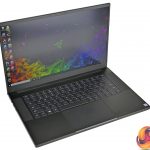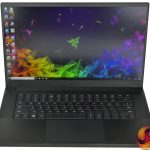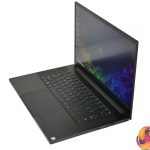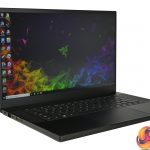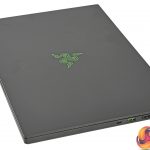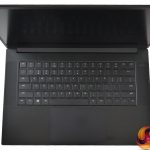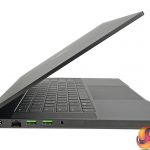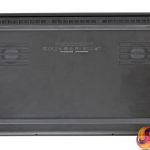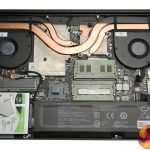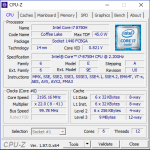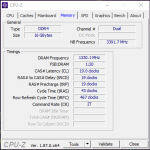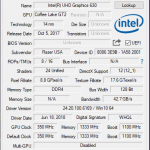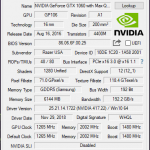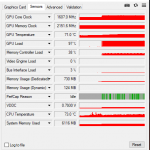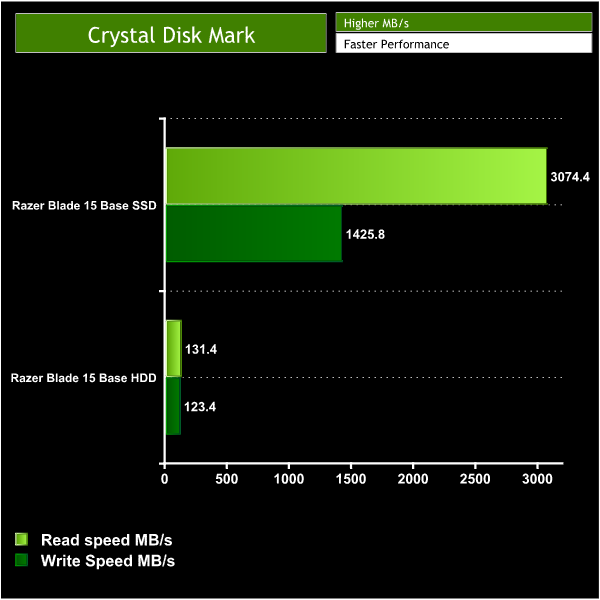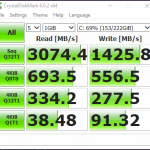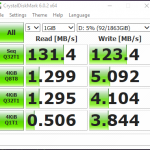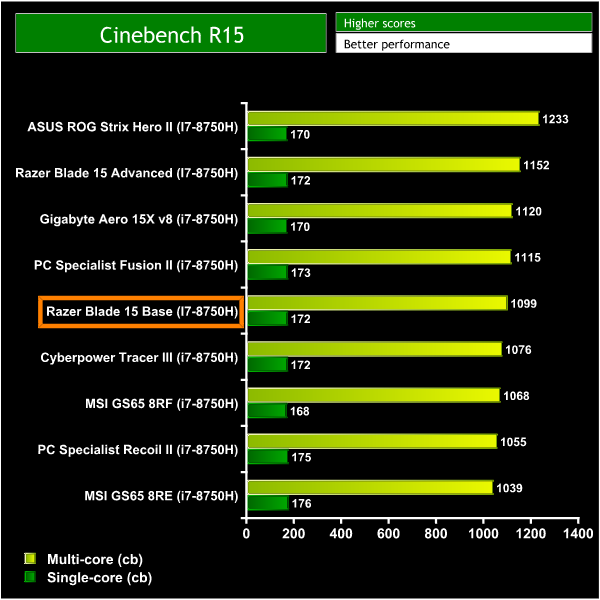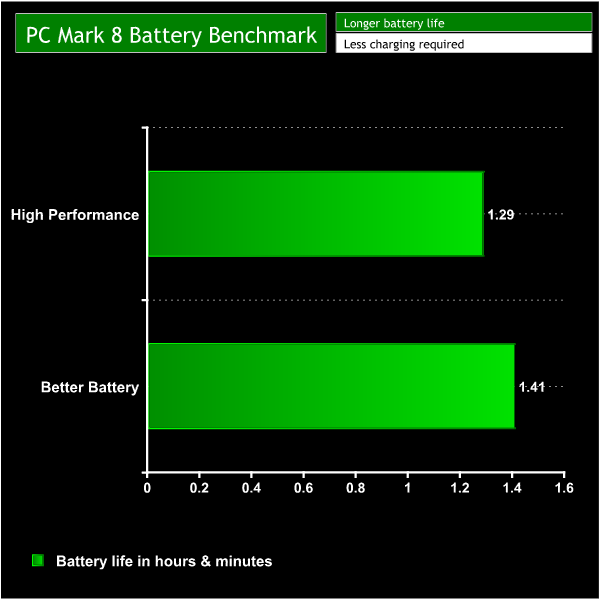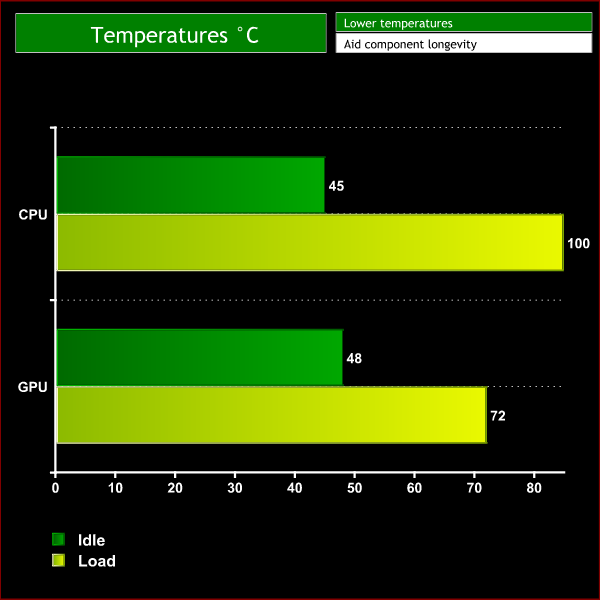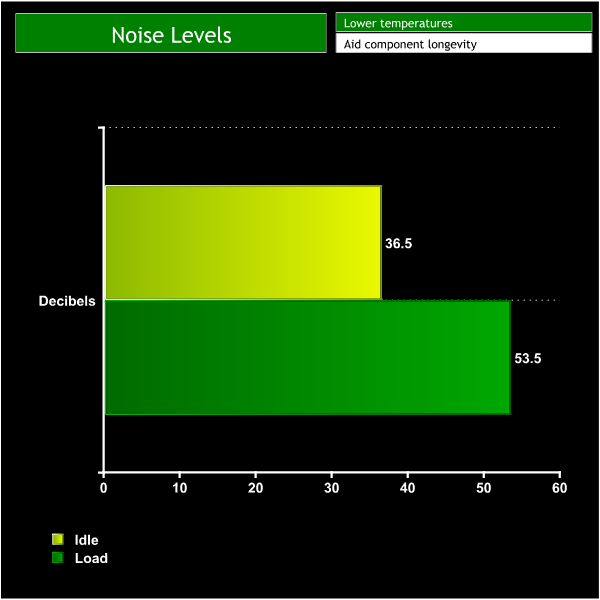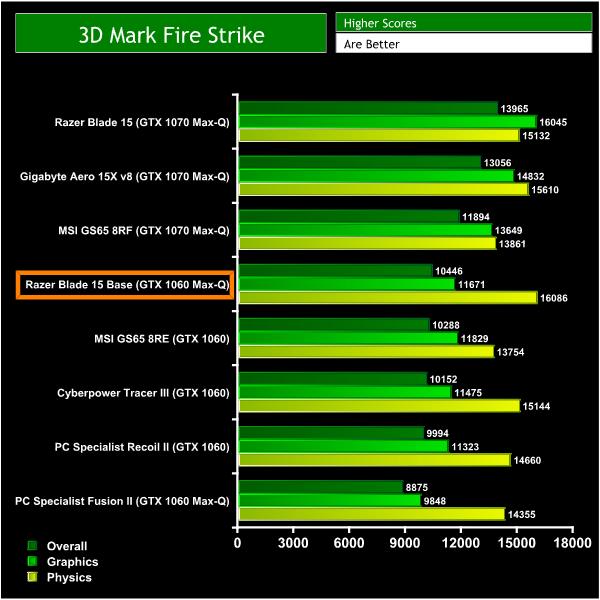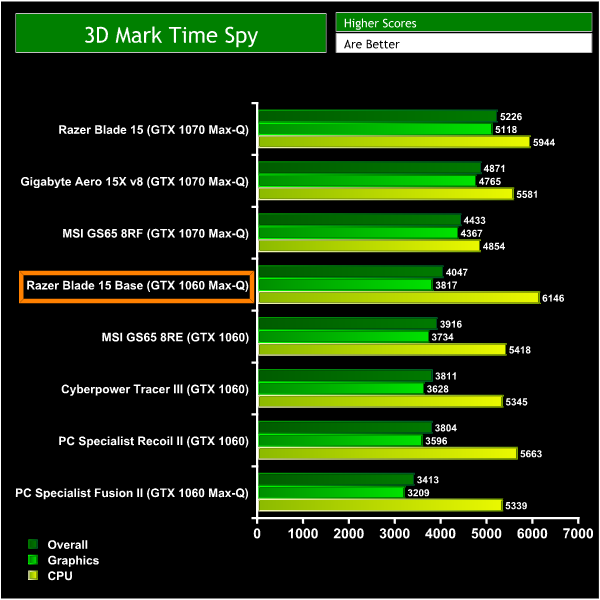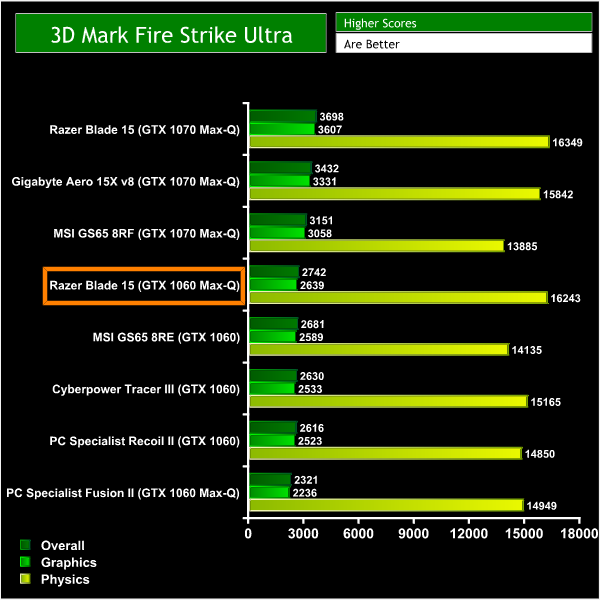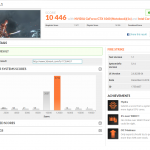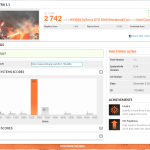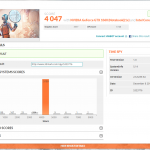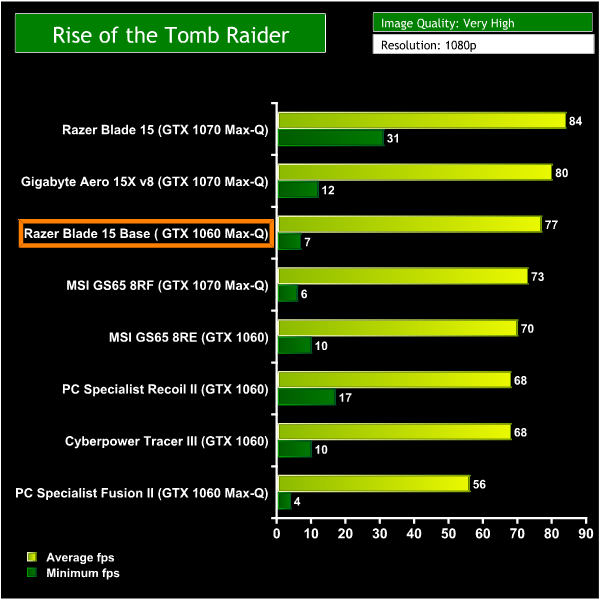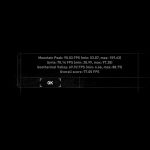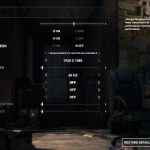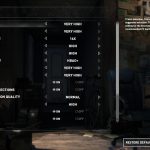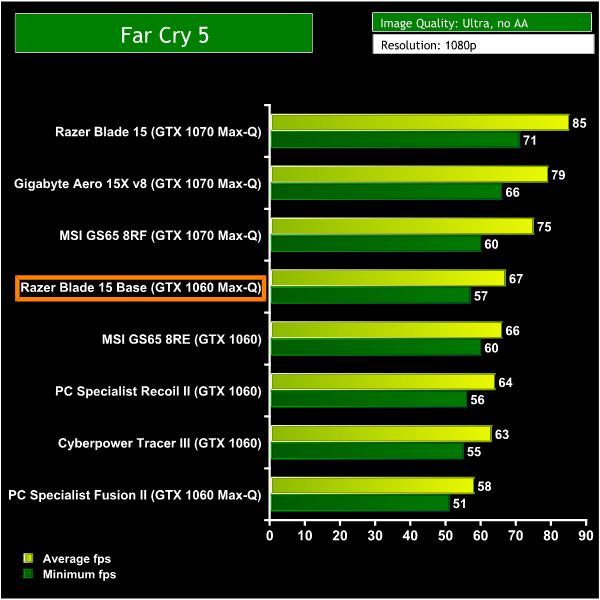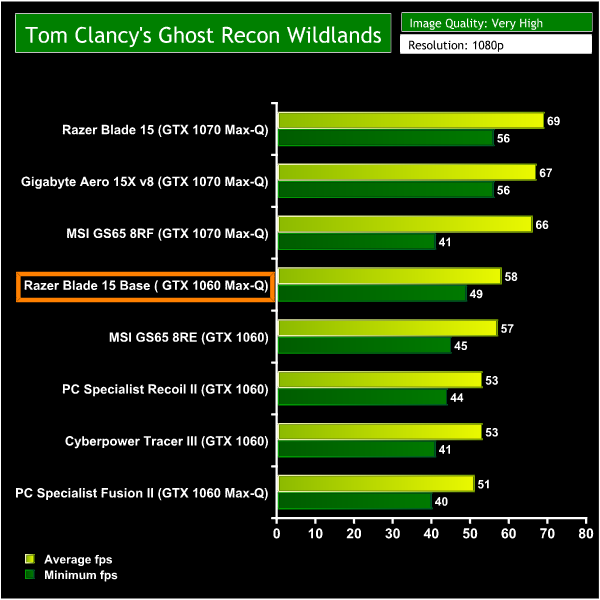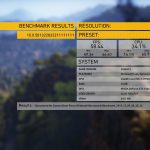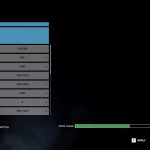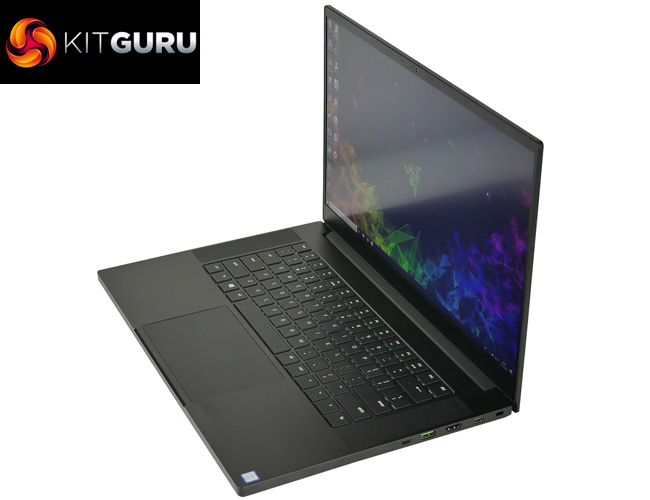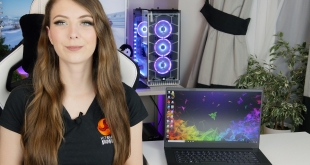
We took a look at the recently updated Razer Blade 15 Advanced model back in October and in this review we assess the newest Base model which is Razer's way of introducing some of the Razer Blade's features to a more budget conscious audience. It still doesn't come cheap with a RRP of £1,480 for the 128GB model, but it does shave off around £250 from the starting price of the Advanced model. But what has been sacrificed and is this a laptop a worthy member of the well-regarded Razer Blade line up?
Gallery:
Specifications:
- Display Size: 15.6″
- Display Type: Full HD 60Hz, 100% sRGB, matte screen
- Processor: 8th Gen Intel® Core™ i7-8750H processor
- Graphics: NVIDIA® GeForce® GTX 1060 Max-Q Design 6GB
- Memory: 16GB Dual-Channel DDR4-2667MHz
- Storage: Up to 256GB SSD plus 2TB HDD (5400rpm)
- Ports: 1x mDP, 1x HDMI, 1x Type-C, 3 x USB 3.1
- Thunderbolt 3: Yes
- Ethernet Port: Yes
- Dimensions: 19.9mm x 355mm x 235mm
- Weight: 2.03KG
This laptop uses the hexa-core i7-8750H processor which has a base clock of 2.2GHz but will turbo boost up to 4.1GHz under load on a single core.
The 16GB of memory is DDR4 and runs at a speed of 2667MHz. The GPU-Z screenshots show both the Intel integrated graphics and the dedicated Max Q Nvidia GTX 1060. The Max Q GTX 1060 features 6GB of GDDR5 memory and has a default clock of 1265MHz and a rated boost clock of 1480MHz. However, during testing we did notice the boost clock peaked at nearly 1750MHz and levelled out around 1600Mhz which is rather impressive and makes it a very fast Max Q GPU.
CrystalDiskMark:
CrystalDiskMark tests the raw speed of a storage device. It uses a test file to write data to or read data from the drive. We test using the default 1GB file size.
The SSD used is the M.2 NVMe Samsung 256GB PM981 – an upgrade from the PM961 used with the Advanced model we reviewed earlier this year. This is a very quick little drive with a fast read and write speed that means that the Razer Blade boots up in a flash and makes the OS very snappy. There's also enough space to squeeze on a few frequently used programs or games.
The bonus of the Razer Blade Base model is that it comes with the addition of a 2TB HDD which is where the Advance model is lacking. It's far from the fastest drive but it is upgradable if needs be and it means there is plenty of space for your game library and assorted media.
Cinebench R15:
Cinebench R15 is a cross-platform testing suite that measures CPU performance. We compare the Fusion II with some other laptops we have tested that feature the same processor for a quick comparison to demonstrate its relative performance.
The Cinebench score achieved by the Razer Blade 15 base sits somewhere in the middle compared to other laptops we have tested with the i7-8750H. Looping Cinebench 10+ times does eventually heat up the CPU and the score will drop down to 987. This is to be expected from this Coffee Lake processor as the clock speed decreases as the temperature of the CPU rises over time.
Battery Life:
To test battery life we used the ‘Home’ benchmark in PCMark 8. This test isn’t hugely demanding when it comes to computational requirements and, although artificial, it is likely to simulate the sort of stress the laptop would undergo while doing a small amount of video editing, web browsing and word processing. We set the screen brightness to 100%, and the keyboard brightness to 100%. In the Razer synapse software the performance mode was also set to gaming so the laptop was running at full processing speed.
The PC Mark 8 benchmark shows that the Razer Blade 15 Base's 65Wh battery lasted around an hour and a half on both power modes we tested. This is an artificial benchmark so you could expect to double this time in a real world situation. However, 3 hours is pretty poor and even if you turned off the keyboard LEDs and really dimmed down the screen we would still only expect about 4/5 hours – maximum – of use.
Gaming laptops generally seem to be lasting longer and longer, but unfortunately it seems this laptop is lacking compared to its competitors when it comes to battery life. For example the more expensive Razer Blade 15 Advanced model with its 80Wh battery can last longer – so we are seeing a direct impact of the decision to include a 2.5in HDD, as the battery has been made smaller as a result.
Temperature testing:
We tested the temperatures with the laptop set to ‘best performance' mode with the charger plugged in. We run AIDA 64 for 10 minutes to stress the CPU & GPU simultaneously.
Under idle conditions the i7-8750H easily reaches a maximum all-core speed of 3.9GHz while sitting at a reasonable temperature of 45C. However, during stress testing we saw the CPU peak at no less than 100C. This is obviously a very hot result, but bear in mind the boost behaviour of the i7-8750H – it only hit this temperature for the first few seconds of the test before the clock speed was reduced to a level which the system could maintain, so the 100C temperature is not sustained at all.
With that said, the clock speed dropped down to 2.5GHz/2.6Ghz and the temperature to 79C for the majority of the test. In comparison to the advanced version of the Razer Blade 15 this is a very similar result, as that laptop could maintain 2.4/2.5GHz under load. Both these models compare poorly to other laptops with the i7-8750H – the more affordable PCSpecialist Fusion II sits at 2.8GHz under load, and some other competitors like the Aero 15X can sit at 3.1GHz and above.
Meanwhile, the GPU temperatures are much better. The GTX 1060 in it's MAX Q form runs relatively cool and remained at a reasonable 48C while the laptop idled, and it only maxed out at 72C under load during our performance testing – so absolutely nothing to be concerned about. As mentioned, that was with the core clock hovering around 1600MHz, too, which only makes the result look even more impressive.
Noise levels:
We measured noise levels using a sound meter while the laptop was idle with no programs open, and then during stress testing to get a reading with the system under 100% load.
When idle the Razer Blade 15 Base doesn't make much noise at all. A reading of 36.5 decibels means that you can only really notice the fans when deliberately listening out for them. Under load the fans do definitely get a lot louder. It's not unbearable and headphone users are unlikely to notice while gaming, but anyone in the area around you is likely to get a little annoyed.
We also noticed that the fans do begin to spin up reasonably easily when doing anything more demanding than just sitting on the desktop. Putting the laptop into the ‘Balanced' performance mode does make the fan profile a lot less aggressive though, at the cost of a slight decrease in performance.
3DMark Results:
For this test, we ran the Razer Blade 15 through Fire Strike, Fire Strike Ultra and Time Spy. In the graphs below you can see it compared against similar laptops. Even though they all have similar specifications, slight variations in boost clock speeds caused by fluctuations in temperature have an impact on performance.
The 3D Mark scores coming from this laptop are very impressive. It managed to overtake laptops featuring the full fat GTX 1060 even though the Blade 15 only features the Max Q model. The maximum boost clock of 1746MHz and good cooling mean the GPU can perform to its full potential and produce some great results.
The Physics and CPU scores are equally impressive and this looks overall a very capable machine that should have no issues playing demanding games and undertaking taxing productivity tasks.
Gaming performance:
We used the Razer Blade 15 to play 3 different popular and graphically demanding games. We tested the games at their highest graphical settings with DX12 turned on and AA disabled. We then compared our findings to similar laptops.
Rise of the Tomb Raider is an action adventure game with many different environments and immersive landscapes making it a useful way to test this laptop’s gaming performance.
Far Cry 5 is the most recent release we tested. The gigantic open world of Hope County has plenty of beautiful scenery to test how well this laptop performs with a newer game.
Tom Clancy’s Ghost Recon Wildlands is a game with a superb open world environment. The beautiful scenery of mountains, forests and deserts requires a lot of GPU power to render, particularly on high settings. This demanding game is perfect for testing this PC’s gaming performance.
Results from the games testing are just as impressive as the results we saw from 3DMark. The Max-Q GTX 1060 in the Razer Blade 15 Base is putting in work to give some really great frame rates – despite being a MAX-Q chip, this 1060 was simply boosting well beyond MAX-Q specification, to the point where it matched or outperformed full-fat GTX 1060 laptops.
It's almost a shame there's no option for a 144Hz display with this laptop as it would likely take full advantage in less demanding titles.
The Razer Blade 15 Base model certainly looks and feels like a member of the Blade family. The chassis is very high quality with a solid construction thanks to the CNC milled aluminium body. It's a little thicker than the advanced model but it's an overall small footprint which makes it a very portable laptop.
The screen to body ratio is great thanks to the thin bezels and the webcam is thankfully squeezed in at the top. The display also looks great with vibrant colours and minimal reflections thanks to the matt panel. The keyboard has good spacing and we like the font and RGB lighting, however we have to say it felt less satisfying than other gaming laptops we have tried over the last few months
The touchpad is huge and the glass construction and Microsoft Precision drivers makes it very smooth and responsive. The speakers and webcam are also good additions at this lower price point for the Blade family.
The performance from the Max Q GTX 1060 GPU in this laptop is extremely good making it an excellent choice for 1080p gaming – it even managed to outperform other full-fat 1060 laptops according to our gaming benchmarks. The CPU cooling isn't the best, though, as shown by this laptop's mediocre boost clock when compared to other machines, though it is still a 6-core chip and it scored well in Cinebench.
The main let down with this laptop is the battery life. The 2TB HDD is a really nice addition over the advanced model but unfortunately it takes up space needed for a larger battery and this is really noticeable throughout continuous use of the machine. We also found it to get pretty noisy rather quickly when using it in the high performance gaming mode which isn't ideal if you're trying to game or video edit in a quiet environment.
That being said, this is an overall solid machine. The build quality is excellent, and the thin chassis and tiny bezels make it a very attractive machine. We also have no complaints about performance – it can get a little hot and noisy but it easily gives a solid 60fps in some of the most demanding games.
If you're willing to splash the cash on a laptop but don't want to go fully over the top with the Advanced model, the Razer Blade 15 Base provides a good middle ground.
The Razer Blade 15 Base model (256GB & 2TB HDD) can be found HERE for £1,649.99, though it is currently on offer for £1559.99.
Pros:
- Top build quality
- RGB keyboard and sleek aesthetics
- Great performance
- GPU runs cool and fast
- Fast SSD with extra HDD storage for games
- Large, accurate and responsive touchpad
- Loud speakers that are well positioned
Cons:
- Cost
- Battery life could be better
- Fans can get noisy
- CPU and chassis can get a bit toasty under heavy load
- No option for a 144Hz display
KitGuru says: The Razer Blade 15 Base makes the Razer Blade line up that little bit more affordable without making too many sacrifices.
 KitGuru KitGuru.net – Tech News | Hardware News | Hardware Reviews | IOS | Mobile | Gaming | Graphics Cards
KitGuru KitGuru.net – Tech News | Hardware News | Hardware Reviews | IOS | Mobile | Gaming | Graphics Cards


